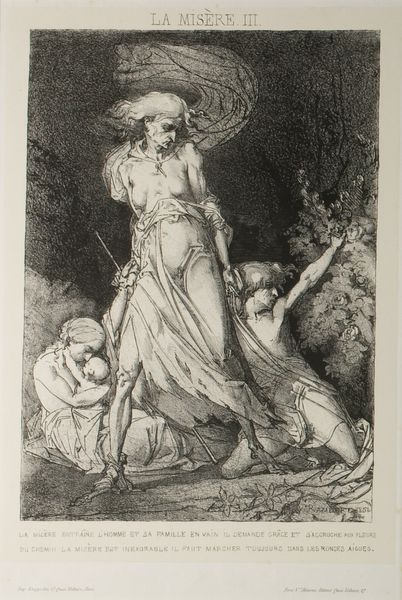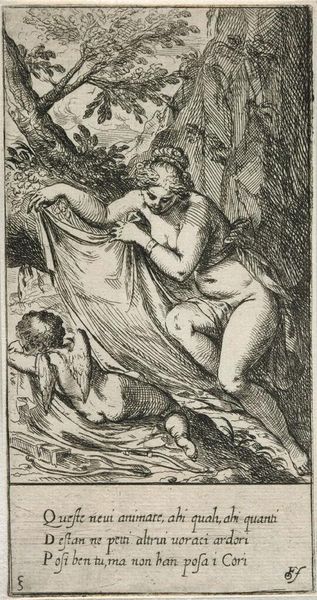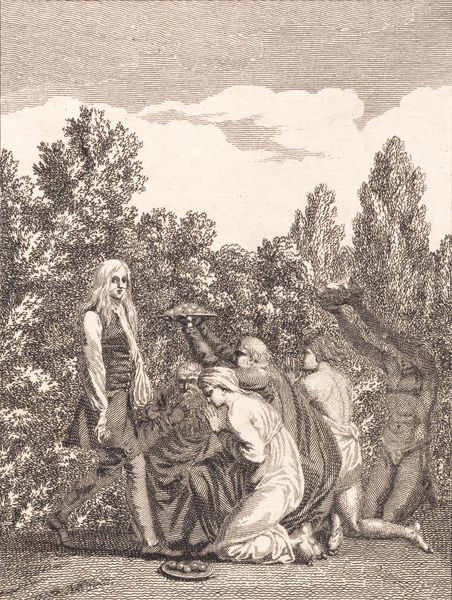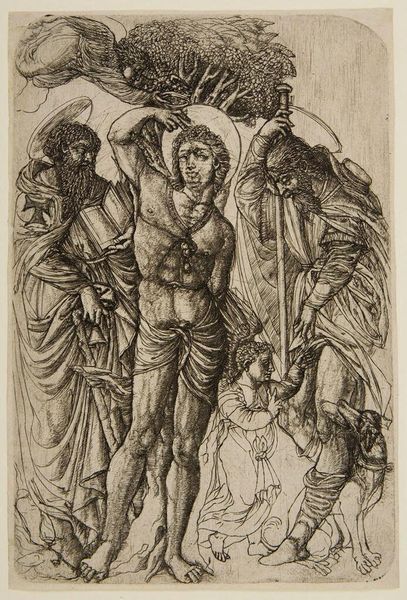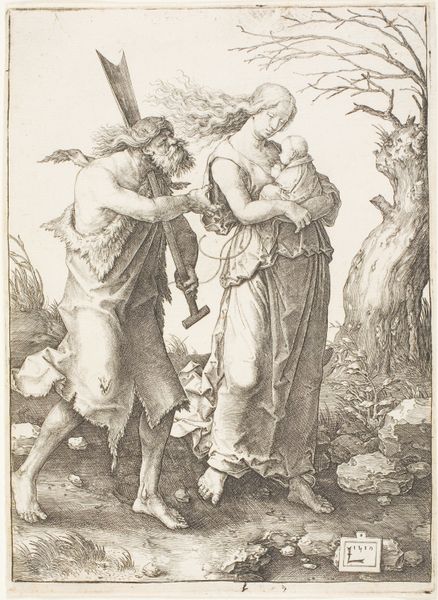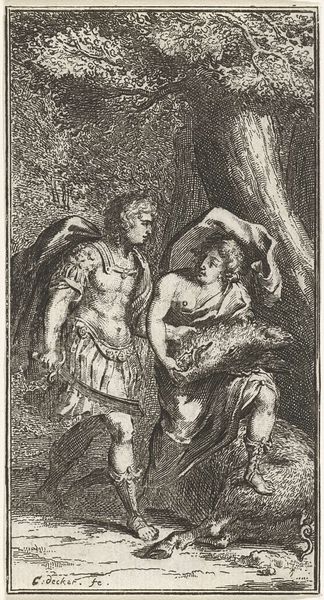
Copyright: Public Domain: Artvee
Curator: Oh, my, the way those women clutch at him—it’s practically suffocating! Like he’s the last bit of daylight slipping through the trees. Editor: That's a powerful initial response. We're looking at "Tannhauser", a pen and pencil drawing crafted in 1861 by Sir John Everett Millais, a prominent figure in the Pre-Raphaelite movement. The artwork explores the moment the knight Tannhauser gets caught in the grasp of sensual, ethereal beings, and that is how you get the sense of something fleeting being chased after, it is all carefully thought of! Curator: "Ethereal" is polite! They look more like feverish dreams. Millais really nails that Pre-Raphaelite fascination with medieval lore, doesn’t he? Though Wagner’s opera of the same name does come to mind. But I can’t shake the feeling there’s a darker undercurrent… a sense of loss. Editor: Interesting, from a Formalist viewpoint, look at how Millais uses line and contrast to create a sense of depth and drama. The heavy, dark lines around the forest really contrast against the soft and flowy rendering of the figures creating this separation and push-and-pull between these groups that you can feel. Curator: He certainly knows how to spin a visual yarn, doesn't he? Maybe it's a meditation on temptation. Tannhauser seems stoic, almost resigned. But isn’t there also a story within each nymph's pleading face? Is it longing or entrapment, really? Perhaps, if one pauses long enough, you can almost hear their whispers and almost smell the enchanted air surrounding our knight. Editor: These psychological projections are interesting. What strikes me in particular are Millais' lines and form, his calculated compositions, which shows us how carefully constructed these artworks can be! There are some artists where we have to read into the hidden message and there are some, like in this piece, where we should sit and just view. Curator: Mmm, yes, indeed. Perhaps "Tannhauser" simply urges us to be present, to observe without prejudice… and let the story unfold within our own souls. I must agree; perhaps, the best tales are, indeed, the ones we co-create. Editor: Absolutely! A final point on "Tannhauser": This piece offers layers of observation both to the artist's method and our own personal reflection!
Comments
No comments
Be the first to comment and join the conversation on the ultimate creative platform.

